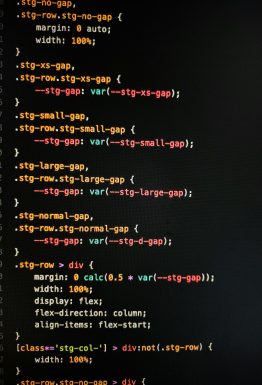The map() function in Python is a built-in tool that allows programmers to apply a specific function to each item in an iterable, like a list or tuple. It is an elegant solution when one needs to process elements without using explicit loops. Whether you’re cleaning up data, transforming values, or applying calculations in bulk, understanding how to use map() can significantly boost your productivity and code readability.
TL;DR (Too Long; Didn’t Read)
All Heading
The Python map() function applies a given function to each item of an iterable and returns a map object (which is an iterator). It’s commonly used with lambda functions to keep code concise. You can convert the map object into a list or another data type. It’s useful when avoiding explicit loops and trying to write more Pythonic code.
What is the map() Function?
The map() function is a higher-order function, meaning it takes another function as an argument, along with one or more iterables. It then applies the function to every element in the iterable(s).
Syntax:
map(function, iterable, ...)Parameters:
- function: The function to apply to each element.
- iterable: One or more iterable objects like lists, tuples, etc.
Returns: A map object (an iterator), which can be converted into lists, tuples, etc.
Step-by-Step: Using map() in Python
1. Create a Function to Apply
The first step is to define the function that will be applied to each item. This can either be a custom function or a lambda function (an anonymous inline function).
Example: Let’s define a function that squares a number.
def square(n):
return n * n
2. Prepare an Iterable
Now, set up the data you want to process. Typically, this will be a list or tuple.
numbers = [1, 2, 3, 4, 5]3. Apply map() to the Data
Use the map() function to apply your function to each element of the iterable.
result = map(square, numbers)Since result is a map object, you may want to convert it to a list so you can display or use the processed data.
output = list(result)
print(output) # Output: [1, 4, 9, 16, 25]
Using map() with Lambda Functions
In many cases, it is more efficient to use a lambda function directly within map(), especially if the function you’re applying is short and used only once.
numbers = [1, 2, 3, 4, 5]
squared = list(map(lambda x: x*x, numbers))
print(squared) # Output: [1, 4, 9, 16, 25]This avoids the need to define a separate function and makes the code cleaner.
Using map() with Multiple Iterables
An advanced case involves passing more than one iterable to map(). The function applied must then be able to handle that number of arguments.
Example: Summing two lists element-wise.
numbers1 = [1, 2, 3]
numbers2 = [4, 5, 6]
summed = list(map(lambda x, y: x + y, numbers1, numbers2))
print(summed) # Output: [5, 7, 9]
map() vs List Comprehension
Many Python developers prefer using list comprehensions for transformations due to their readability and flexibility. Here’s how both approaches compare:
Using map():
result = list(map(lambda x: x + 1, [1, 2, 3]))Using list comprehension:
result = [x + 1 for x in [1, 2, 3]]Both yield the same result, but list comprehensions generally offer more readability, especially for more complex transformations. However, map() can improve performance when working with very large data as it returns an iterator rather than constructing a full list immediately.
Common Use Cases for map()
Some of the most typical scenarios where map() proves useful include:
- Parsing input: For instance, converting a list of strings into integers.
- Data transformation: Applying operations like squaring, converting case, etc., on all items in a list.
- Working with multiple datasets: Performing element-wise operations such as addition and multiplication.
Key Takeaways
- The
map()function transforms input iterables without using explicit loops. - It returns a map object which must be converted to a list or another data structure for visibility.
- Lambda functions are often used with
map()for concise and readable code. - Multiple iterables can be passed in, making
map()very flexible for pairwise operations.
Best Practices
- Prefer lambda functions with
map()for quick, one-time operations. - Use named functions if the function logic is complex or used more than once.
- Convert map output to a list when direct access or display is needed.
- Use list comprehensions in place of
map()when readability is a priority.
Conclusion
The map() function in Python is a powerful feature for transforming iterables efficiently. Whether used with named functions or anonymous lambda functions, it helps achieve concise, readable, and functional-style code. While it’s not always the best tool for every case, it shines in scenarios where you need to apply uniform transformations across data collections.
FAQ: Python map() Function
-
Q: What does the
map()function do?
A: It applies a given function to each item of an iterable (or multiple iterables) and returns a map object (an iterator). -
Q: How do you convert a map object to a list?
A: You can use thelist()function:list(map_object). -
Q: Can I use multiple iterables in
map()?
A: Yes, as long as the function passed tomap()can handle that number of arguments. -
Q: When should I use
map()over a list comprehension?
A: Usemap()when you’re applying a simple function and want more memory-efficient, lazy evaluation. Use list comprehensions when prioritizing readability and inline transformations. -
Q: Is
map()faster than a for-loop?
A: In many cases, yes.map()is implemented in C under the hood, making it generally faster than standard Python for-loops.













Recent Comments